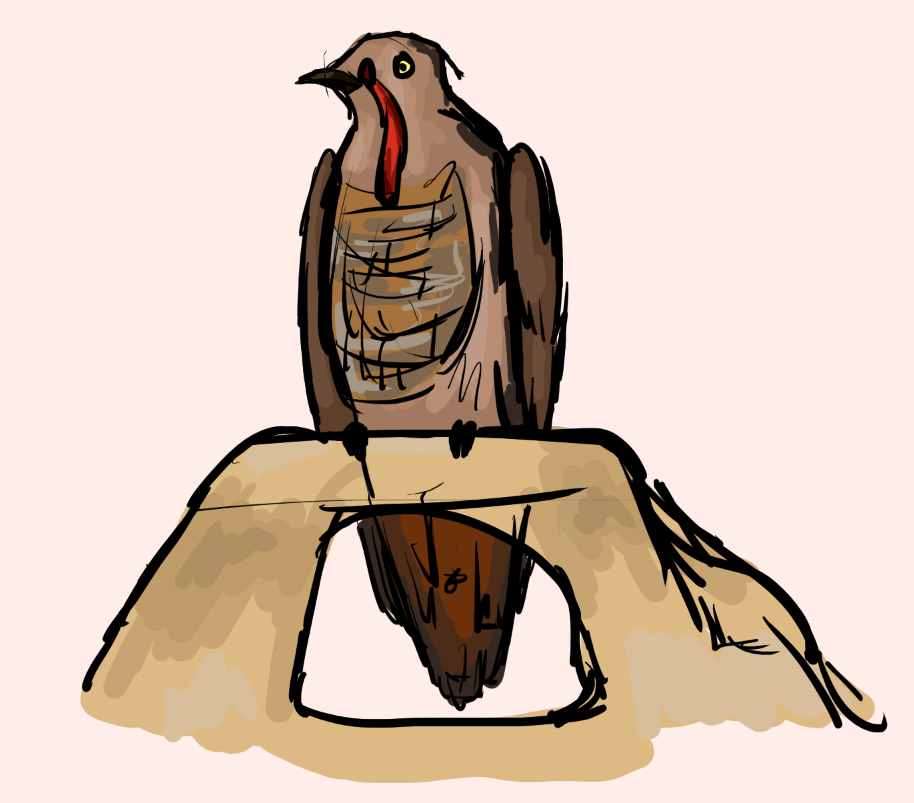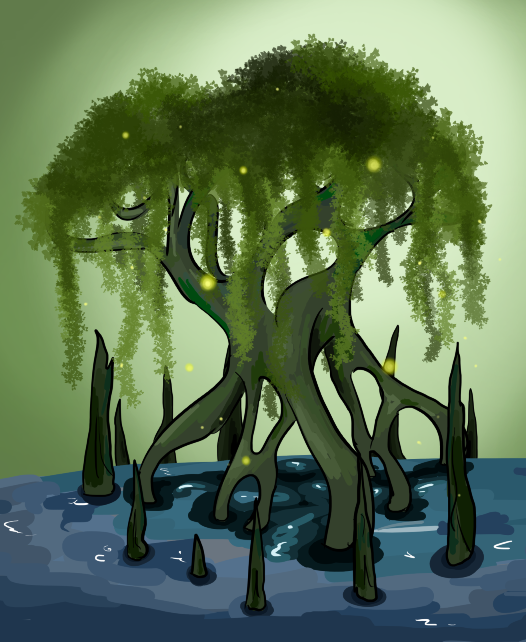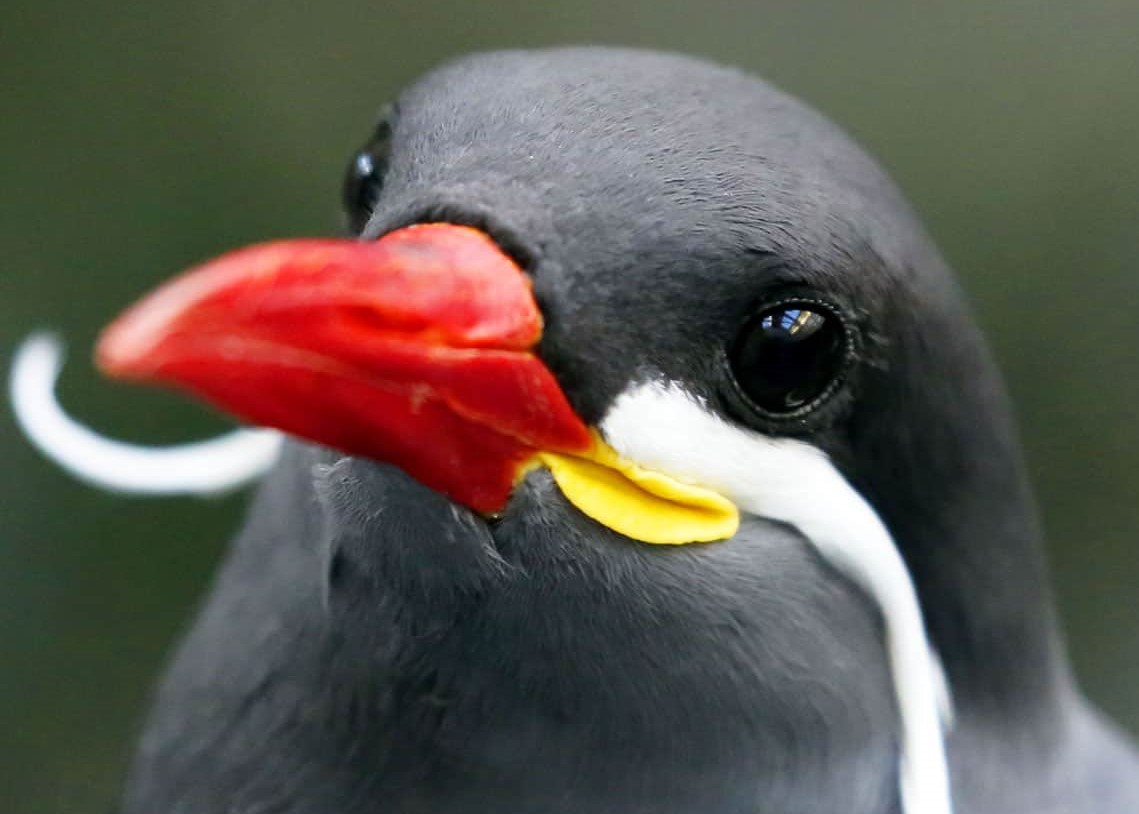Common Nakkan Cuckoo
Common nakkan cuckoos are a species of cuckoo endemic to the Nakkan Swamp. They are a brood parasite, laying their eggs in the nests of other birds, often in nakkan mangrove cuckoo nests, a cuckoo species that aren't brood parasites.
They will also lay their own eggs in their own nests underground. The parents will take care of one batch of eggs while hosts take care of another, simultaneously.
Anatomy
This bird's plumage helps them camouflage in their swampy surroundings. They have an almost entirely brown coluration, supplemented by red wattles and orange streaks on their bellies and tails.
They are a short, chubby looking species who's bodies are mostly fluffy feathers. Said feathers are hydrophobic, allowing the semi-aquatic birds to stay dry.
The cuckoo's wing feathers can condense, overlap, and harden to form flipper look-alikes, aiding them in swimming short speedy distances.
These birds have powerful beaks used to dig small tunnels underground. Their talons aid as well, however their feet are very small and cannot dig much.
Phylum: Chordata
Class: Aves
Order: Cuculiformes
Family: Cuculidae
Genus: Cacama
Species: C. perfora
Average Wingspan: 35 - 45cm
Average Lifespan: 5 - 15 years
Diet
Common nakkan cuckoos are not fussy eaters. They are opportunistic animals that will hunt any small animals available. They do forage for seeds and fruits, but prefer to hunt for their food, as it is more enriching. These birds have been spotted eating insects, small bird eggs, small mammals, reptiles, amphibians, and small fish, among other small animals.
Content Warning: Gruesome imageryTo kill larger prey that they can't swallow in one go, the cuckoos will find a sharp tree branch and impale the animal on it, ripping it to pieces without actually killing it first.
Reproduction & Growth
Despite what many think, common nakkan cuckoos are not terrible parents. They may be brood parasite, laying their eggs in the nests of other birds, but these are not the only eggs they lay in a single breeding season. For the maximum chance of their offspring's survival, female cuckoos will lay two batches of eggs.
One batch will mimic another bird's eggs and are placed in another nest. The most common host is the nakkan mangrove cuckoo, caring parents who rarely realise half of the eggs are not theirs. The other batch of eggs are looked after by the biological parents.
Long burrows are dug underground, with several real and several fake entrances, to disorient predators. At the very bottom of the burrow seven to nine eggs are laid. Females remain in the burrow, with the entrance sealed with clay, leaving just a small slit. Males will collect food while the female incubates, pushing it through the slit into the nest.
Once the eggs have hatched, the burrow's barrier is broken, and the male reunites with its mate and babies.
Habitat
Endemic to the Nakkan Swamp, these birds cannot be found anywhere else on the planet. They are accustomed to flight, walking, perching, and swimming. Outside of nesting season they are rarely seen on dry land, preferring life in the canopies of nakkan mangrove trees.
Common nakkan cuckoos are apt swimmers. They can hold their breaths for about eight to ten minutes, far longer than most other birds in the region. They hunt fish and invertebrates around the surface of the swamps at dusks and dawns, using the dancing dusklights and dawnlights as a distraction.
Average Wingspan
35 - 45cm














Going full shrike mode on larger prey.
Yussss